The Nepal Earthquake of 2015
On Saturday April 25th at approximately 11:56am, I was sitting in my guesthouse in Pokhara writing about my trekking experience in Nepal when the earth began to shake. When the tremors got larger and ceased to stop, I poked my head out the door and saw a mass of Nepalese congregating in the street. A group of three elderly women spotted me and began frantically waving me over.
More to acquiesce to their frantic calls than anything else, I jaunted out to the street barefoot while the tremors continued. In the heat of the moment it is hard to know how long the shakes lasted, but it seemed about a minute long. It was by far the largest earthquake I have ever felt, but everything seemed fine (and was in Pokhara). The power went out during the earthquake and it didn’t even occur to me that the damage would be worse somewhere else.
Five to six hours later the power returned and the first reports started flowing in about the damage to the Kathmandu Valley, avalanches on Everest, and villages that had been completely leveled. We already had plans to return to Kathmandu from Pokhara the next day and were going to go ahead with them if possible. The buses were cancelled but our patience was rewarded with a single bus asking twice the price. The trip was shorter than usual because there was no traffic on the road. In a few places landslides covered half the road but there was always plenty of room to pass. As we got closer to Kathmandu the damage increased. It didn’t occur to me that I was taking myself into a disaster zone.
Back to Kathmandu
I’ve never been close to disaster. I’ve only witnessed the trailing pieces of hurricanes 5+ years later, visited memorial sites, or seen a special on the news that you forget a few days later. On Sunday afternoon the once bustling tourist center of Thamel in Kathmandu was as empty as a ghost town. Electric wires hanged low everywhere and the metal shutters on every building were shut. The damage didn’t seem as bad as other areas we passed back on our way through the city, but turning the corner on one street or peering down an alley would show an entire five story building shaken to the ground.
Thamel, Kathmandu.
Down an alleyway in Thamel. Police in the background were loading bodies into the truck.
Around the city were various sites that had been converted into campgrounds housing hundreds of thousands of people whose homes had been destroyed, damaged, or who were simply to afraid of aftershocks to spend the night inside. There wasn’t a single guesthouse open and we took to the park that night with everyone else to sleep under the stars without sleeping bags, blankets, tarps, or tents. Thankfully there was a calmness to the city that belied the fear everyone felt. While the availability of food and water was low there was always something you could find. Ramen packets, snicker bars, and bottled water became my diet for a day and I never felt in danger or that chaos might erupt in the city.
Large campsite at Ratna Park.
I spend the next night in a windowsill of the American Embassy, was fed a warm breakfast of rice, beans, and delicious bacon, and used the nicest bathroom I had seen in over 5 months. It had been almost 72 hours since the first quake and a few shops, restaurants, and guesthouses had begun to open up, although the majority of the city still slept outside at night.
The general vibe among travelers in Nepal seemed to scream “get me out of here!” Everyone was scrambling for a ticket out of the country, some countries were providing free flights home through their embassies, and many people got on the first buses to Pokhara. I wanted to go on another trek, but I could imagine the suffering of the country lingering at the back of my mind as I viewed panoramas of the Himalayas and I knew that trekking would have to wait for another visit.


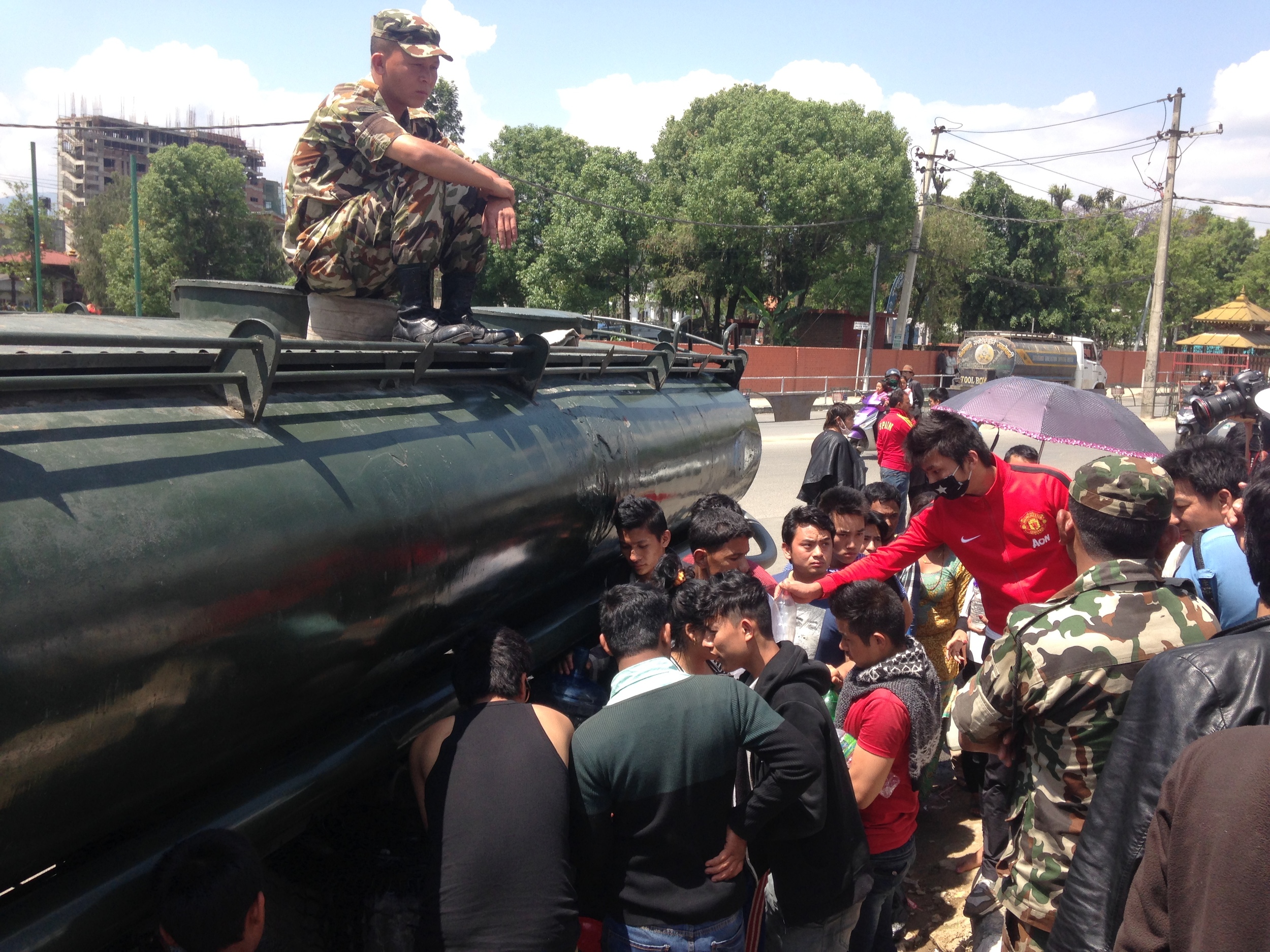
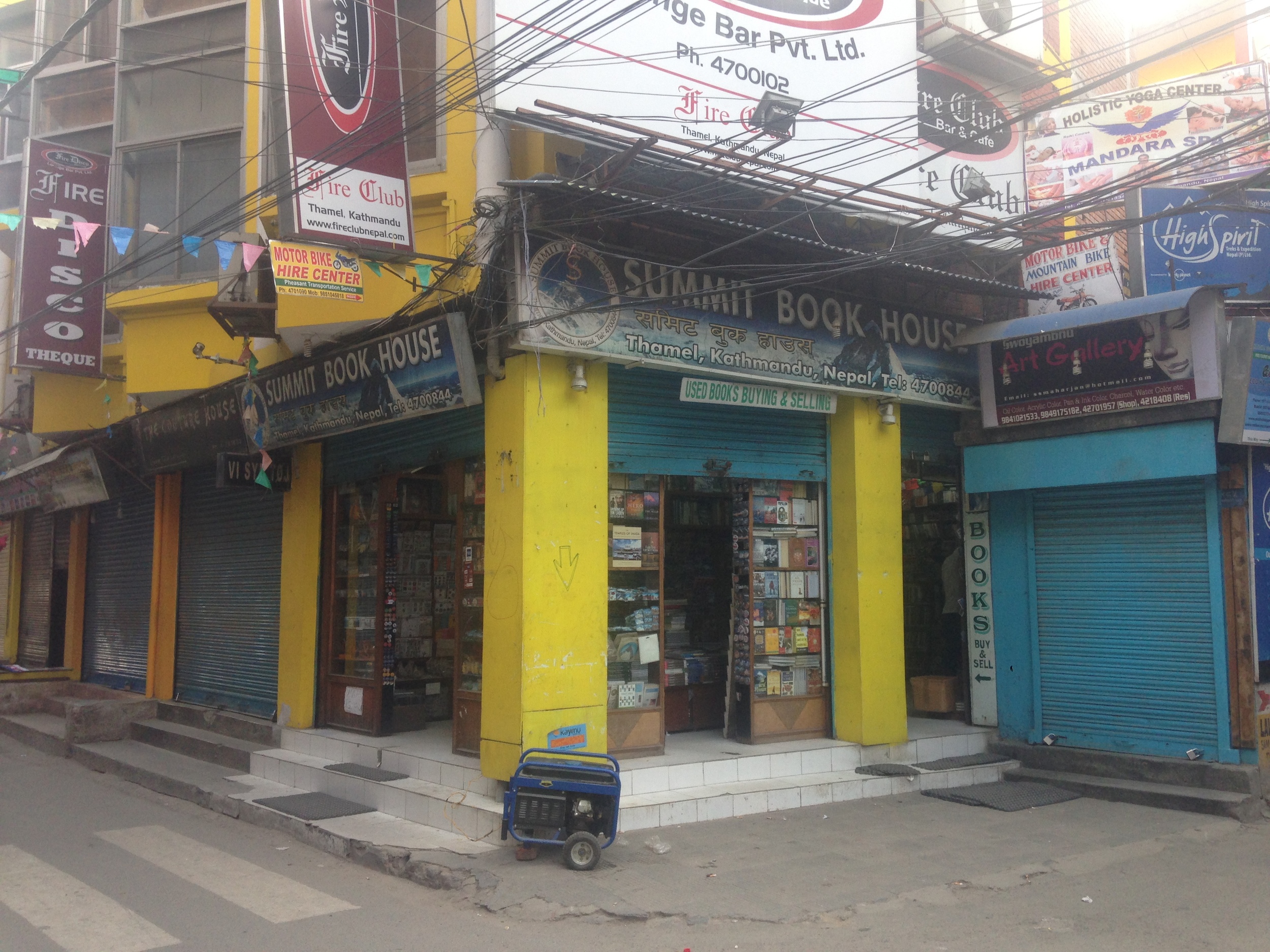
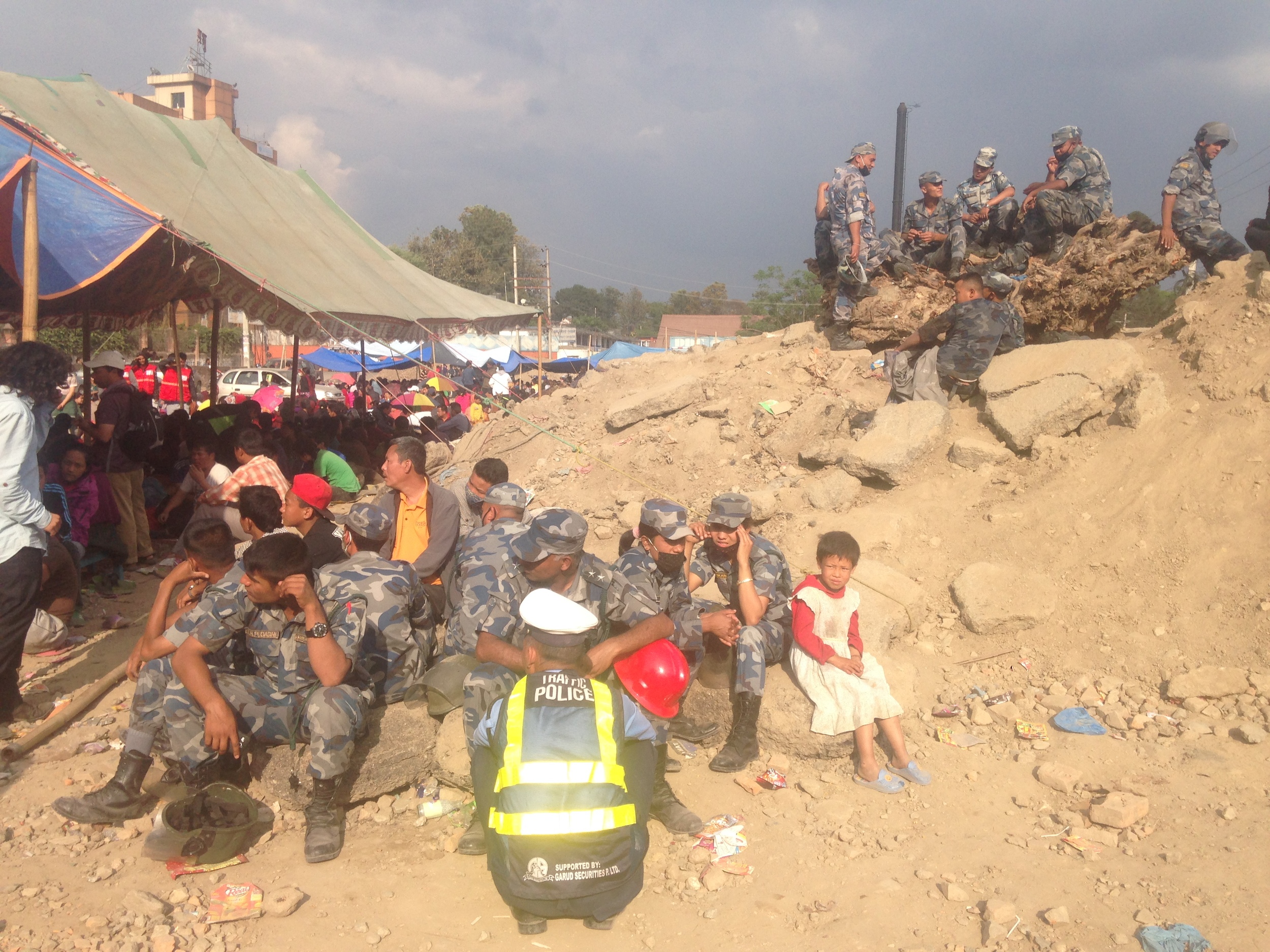
In and Out of Kathmandu
For two weeks straight since the earthquake I met hundreds of people working their butts off. I saw disaster area relief teams from over ten countries all working to save their citizens and Nepalese alike. There were waves of people donating blood to the Nepal Red Cross, volunteering in hospitals to relieve nurses and doctors, searching for information about missing persons, and individuals (foreign and Nepali) raising thousands of dollars for relief efforts.
Giving blood.
Loading a truck with rice.
Through volunteering at the hospital I started to make connections with various people all looking to help out. I joined a group created by 5 Nepali business owners who pooled their funds to send out initial relief while they began fundraising for more. Based out of one of the businessman’s car shop, we all helped to load up the trucks, make delivery trips to nearby villages, and sort the medical supplies that arrived in unmarked bags and boxes. It was all very chaotic and slightly unorganized, but the effort and relief it provided cannot be denied.
I went out to two different villages and what I experienced was very different. The first village took 6 hours to reach, half of that time down an extremely difficult to navigate dirt road. We were sent to collect information on the damage and assess what supplies were needed. The name of the village was Deurali (south of Dolaghat) and we were told that it hadn’t received help because it was outside of what was considered the heavily hit areas and was being neglected.
Upon arrival it seemed as though the information we received was a bit embellished and our focus should return to different areas. We passed major supply trucks heading up the same dirt roads and the amount of damaged households were low. We also learned that all of the neighboring villages were okay from a electrician who had restored power to the area. We still had some food, tarps, and medicine and decided that it would still be of use for the people in this village and set out to find those most in need.
Complete destruction in Deurali.
Nepalese digging out their home.
To our dismay we felt the disunity within the village due to the caste system. Those of lower caste lived farther away from the road and probably didn't receive as much aid from the rest of the village. We were routinely deterred and given false information as to who were the most needy and it was a very frustrating and tiring process handing out food and tarps to those we thought most needed them.
My experience at the second village was quite the opposite. Batase is situated in the Sindhupalchowk region of Nepal which was the most heavily hit area in the country. Setting out on a truck bed full of rice we drove to the village guided by one of the villagers themselves. This was the first aid they had received since the earthquake that had happened 10 days prior. All the villagers gathered together and there was a list with everyone’s name on it. You could see the happiness in the faces of every member as they heard their names called to pick up a bag of rice. Young children and elderly all bent their backs to carry home the food. There was no arguing, whining, or pleas for more and I wished the previous village had banded together as this one had.
Sitting on a truck bed full of rice and giving a couple locals a lift.
Receiving food for the first time since the quake.
The destruction was extremely apparent in Batase and many more of the villages that we passed along the way. Every building was at least slightly damaged. Entire schools were flattened leaving me grateful that the earthquake happened on a Saturday when no one was there. The hardest part about visiting the villages was hearing about those who died from the lips of their loved ones. Stories of brothers buried in landslides, grandmothers unable to make it outside in time, and children too small to dig free of the rubble that trapped them.
A school that was completely leveled in Batase, Sindhupalchowk.
Even with all of the destruction and knowledge of future hardships, the hospitality of the Nepalese never disappeared. People whose homes were ruined offered me food and tea. As I have said many times, Nepal is a beautiful place, and not just because of the landscape. The people are truly amazing and I have been inspired by their fortitude and resilience in the face of loss and danger.
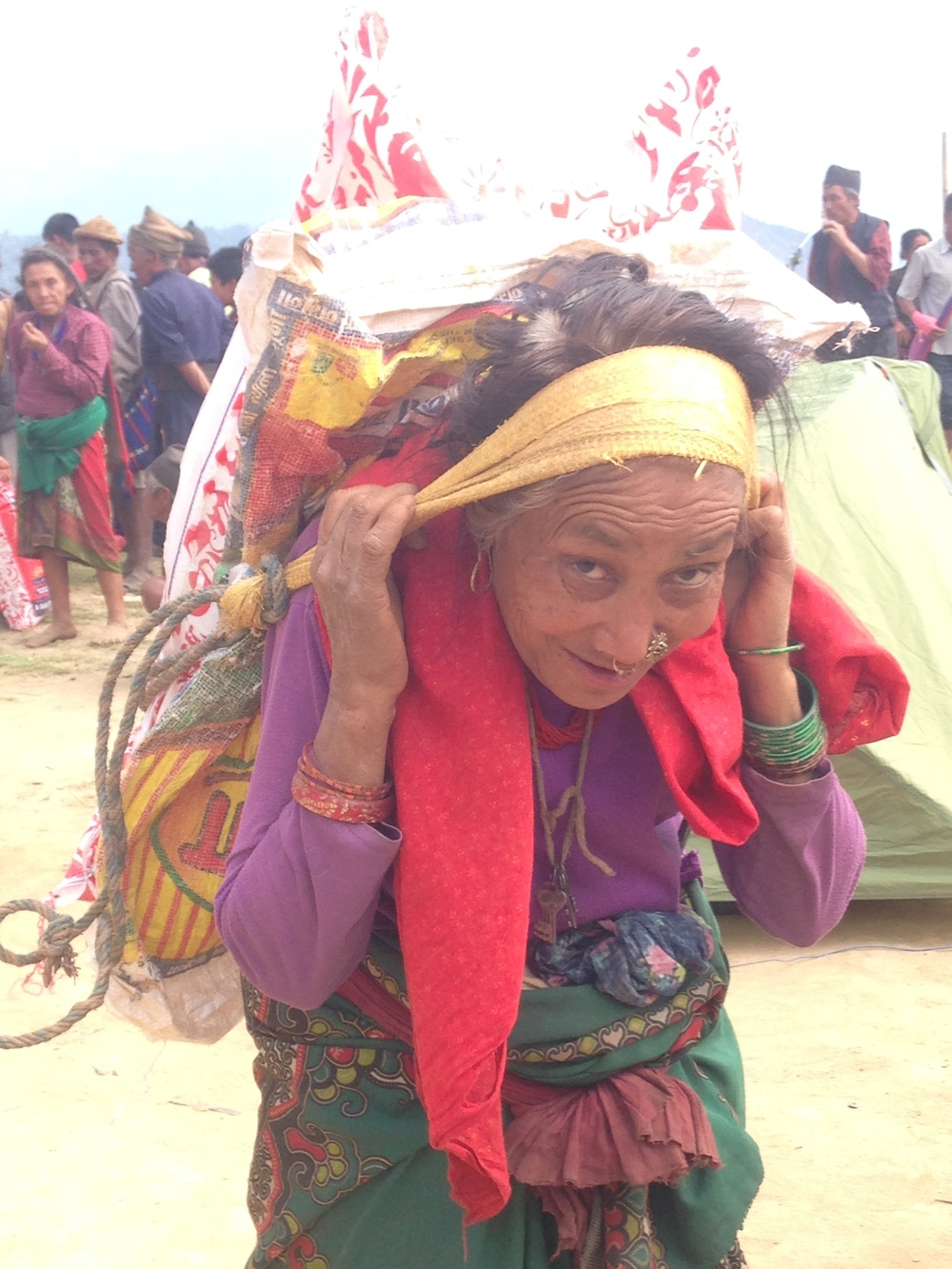
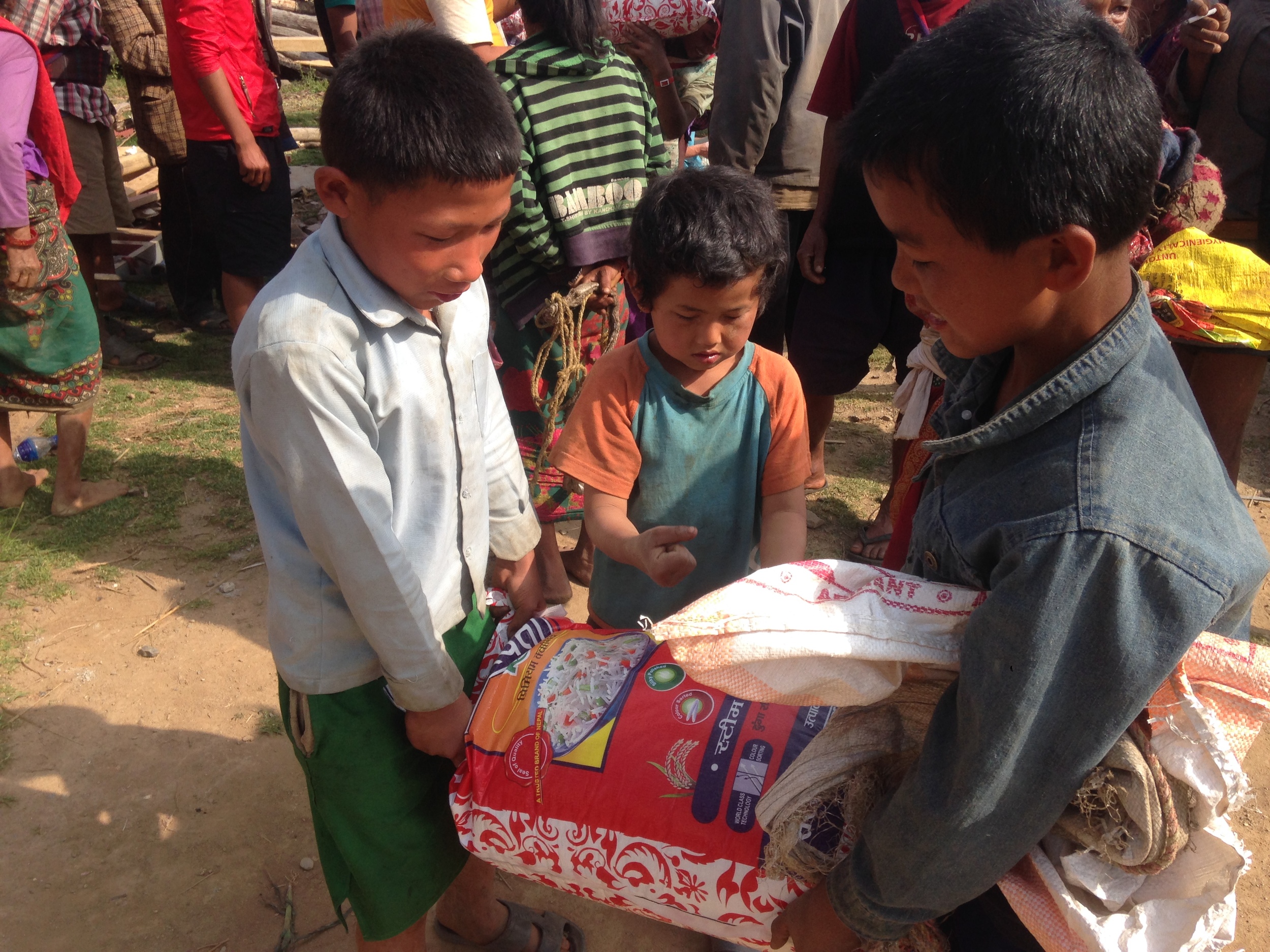
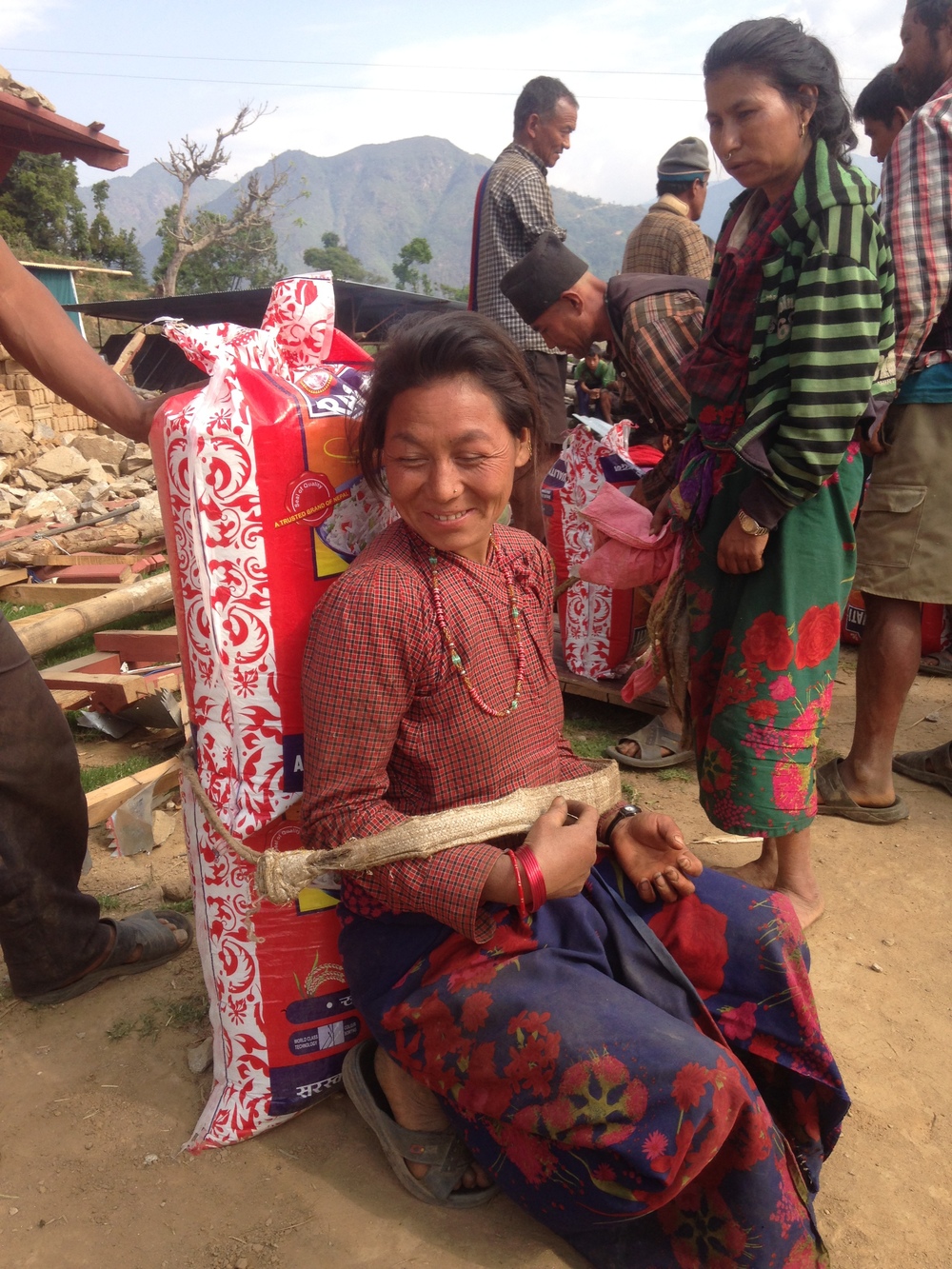
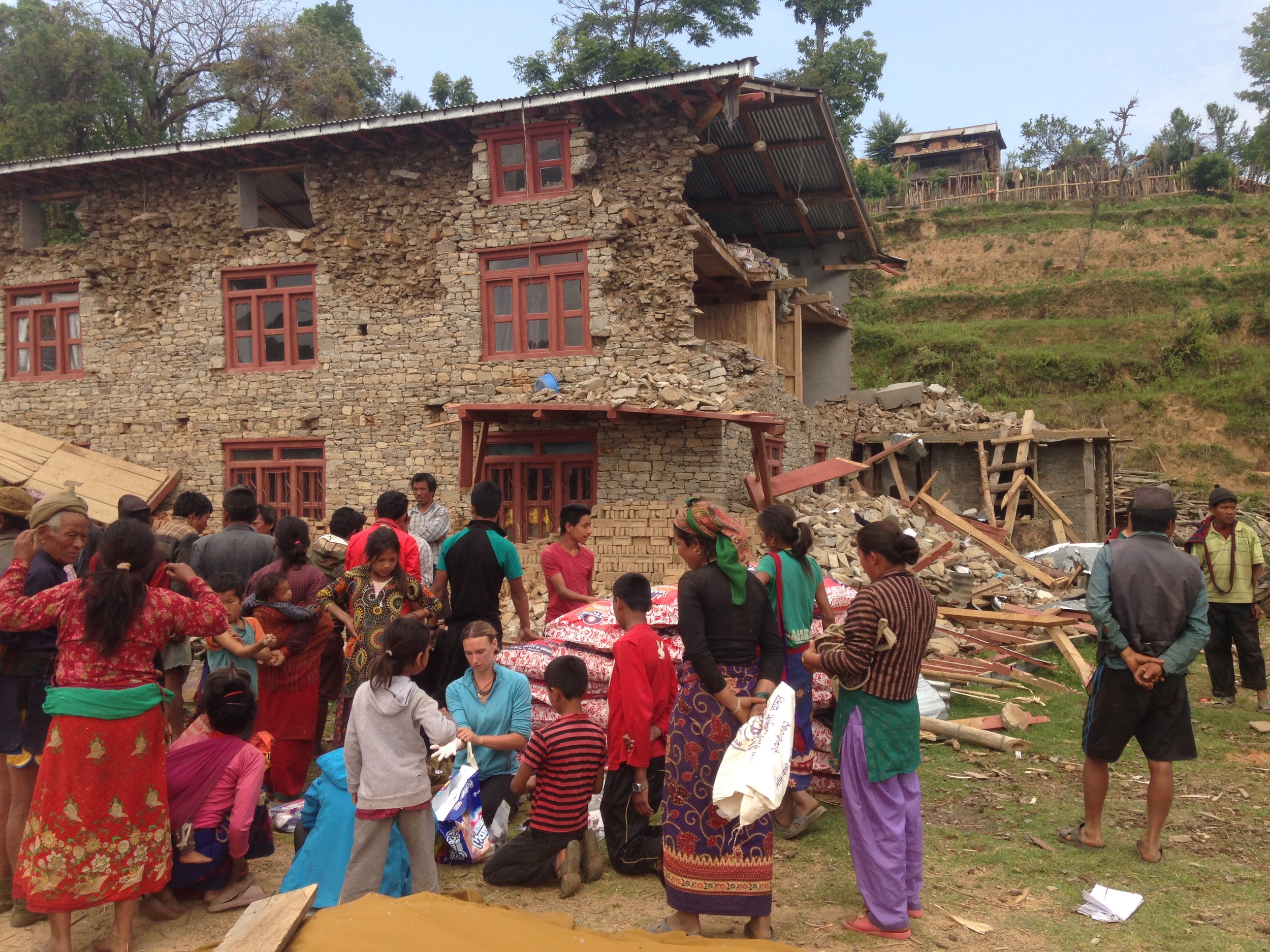
How to Help
Countless people have asked me where they should donate their money. Most people are looking for local organizations that bring supplies directly out to villages, but I can’t guarantee how that money will be used or if in the long run it will go somewhere it is truly needed. I recommend donating to the Red Cross, Unicef, or Oxfam. I have seen all three organizations working hard and I believe that they have the structure to continue to help and provide organized relief, even after much of the enthusiasm has died down in Nepal itself.
If you want to get involved with your hands there are lots of organizations available for volunteering that you can find with a simple google search. I’d recommend waiting a few more weeks for everything to get organized, otherwise you risk showing up to a place that is unprepared to accommodate a volunteer. People with backgrounds in construction are of utmost need as the monsoon season is less than two months away and adequate shelters for the weather needs to be built. Rebuilding Nepal is more than just a project for a few months though. There will be volunteering opportunities over the next few years if you are interested.
UPDATE - Earthquake Number 2
Just when the dust had begun to settle and life had begun to resume some normalcy, Nepal was struck be another 7.3 earthquake. I was walking through the outskirts of Thmael, amidst tall buildings that already had cracks and roads with rubble piled together on the corners. A few bricks fell off the buildings above me, but thankfully no one was hurt. It started as a slow rolling shake, like the end of a sound wave where the vibrations are far apart and luckily never increased over the 30 seconds it lasted.
The damage was minor compared to the first quake, but more houses fell, roads to needy areas became blocked again by landslides, and unfortunately more people felt the loss of loved ones passing before their time. The major damage though was fear. It is a constant undertone behind the streets of Kathmandu, with many families returning to the open areas to sleep under tents and tarps.
There is more help that could always be done, but for me, the time is up and I am moving back to India. After managing to get another Indian visa, a process akin to torture, and also picking up a visa for Myanmar (which was incredibly easy and enjoyable), I am set for my next two to three months of travel. This afternoon I take an aprx. 16 hour bus to the eastern border of Nepal and try to make my way to Darjeeling, India. India Round 3!








